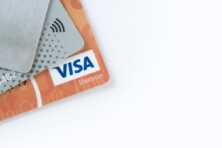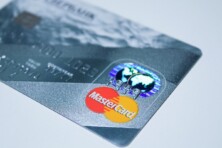What is the main source of income of the most used payment systems?

How do Visa and Mastercard make money? Source: shutterstock.com
Today, millions of people own plastic cards and pay cashless for almost everything they want to buy, from household appliances to boarding passes. A card can be issued by a bank or a financial services company, however, transactions from a card have to be processed by a particular payment system somehow. A payment system is a process that is aimed to settle financial transactions through both transfers and monetary values. In other words, it is an operational network, which connects payment providers with bank accounts.
Mastercard and Visa are considered to be the largest and most popular payment systems worldwide. So, a lot of users wonder exactly how do payment systems such as Visa or Mastercard make money? What is the advantage for them to transfer funds and at what stage of a transaction do they earn?
PaySpace Magazine will try to answer these questions and explain how these corporations earn, and which income schemes are most lucrative.
What do we know about Visa and Mastercard?
Both of them have large, if not to say enormous, payment networks. What is the main role of these companies? They both act as the mediator, literally middlemen. Yes, they are financial service corporations, but it doesn’t mean they send or receive funds from their own accounts/resources. Both of them facilitate money transfers using their well-functioning system and top-notch products. Nevertheless, we haven’t mention American Express or Discover, and this has happened for a good reason.
Here is where we face the question, which can be formulated as follows: “What is the difference between Visa & Mastercard, and American Express & Discover Financial Services?”
How do they make money?
As we now know, Visa and Mastercard are just card brands. Issuing banks pay a fee to use the brand (membership).
Visa and Mastercard take about 0.10% on every single transaction passed through their brands. You can call it an interchange, charged to the merchant, or just a transaction fee. If you think it is too little, then we can prove otherwise. Each of the companies has thousands of transactions daily, which brings them hundreds of billions of dollars yearly. Some experts even say that such a company can make up to $1T a year. If you are still not impressed enough, we dare say that the UK GDP for 2017 was $2,622T. Thus, one trillion is roughly 0.4 of the United Kingdom’s GDP. Still not impressed? One trillion seconds account for as much as 31,710 years. Let’s just imagine what was going on more than 30,000 years ago. Cavemen, Flintstones, Upper Paleolithic (Late Stone Age), call it whatever you want.
Companies as American Express and Discovery normally operate as card issuers and creditors simultaneously. Usually, an average AmEx cardholder borrows funds from the firm’s resources when they carry out any type of transaction.
So, what do we know now? There is a big difference between Visa & Mastercard, and American Express & Discovery. Answering the main question – the primary source of Mastercard and Visa’s revenue are the transaction fees. They also cover the costs of maintaining their networks, customer service, troubleshooting, covering AML and fraudulent transaction costs, etc.
Transaction fees may vary based on the type of business, the type of card, and of course the brand (network) – Visa/Mastercard/AmEx/Discover. Normally, Visa and Mastercard have lower fees compared to Discover and AmEx.
We don’t want to be accused of unfounded claims, so we’d like to provide concrete examples.
|
Interchange fees on Mastercard domestic transactions |
|
|
Interchange Category (Places) |
|
| Government & utilities | 0.32% |
| Service Stations & supermarkets | 0.32% |
| Education | 0.32% |
| Charity | 0% |
|
Interchange Category (Card Type) |
|
| Standard rate | 0.32% |
| Premium Platinum rate | 0.70% |
| Consumer Super Premium | 1.22% |
| Consumer Elite | 2.00% |
| Commercial | 0.94% |
| Commercial corporate executive | 1.14% |
| Commercial business executive | 1.15% |
| Business elite | 1.98% |
Inter Visa Europe interchange fees – European Economic Area (EEA)
| All Extra-EEA Issued Visa Consumer | Credit & Deferred Debit | Immediate Debit & Prepaid |
| Card Present | 0.30% | 0.20% |
| Card-Not-Present | 1.50% | 1.15% |
All the data is true for consumers only (not for commercial needs).
Cross-border Domestic Interchange Programme (Visa)
|
Visa Consumer |
Credit, Charge & Deferred Debit |
Immediate Debit & Prepaid |
| Contactless Low Value | 0.30% | 0.20% |
| EMV Chip | 0.30% | 0.20% |
| Secure Electronic Commerce | 0.30% | 0.20% |
|
V PAY |
||
| Contactless Low Value | n/a | 0.20% |
| EMV Chip | n/a | 0.20% |
| Secure Electronic Commerce | n/a | 0.20% |
SEE ALSO:









